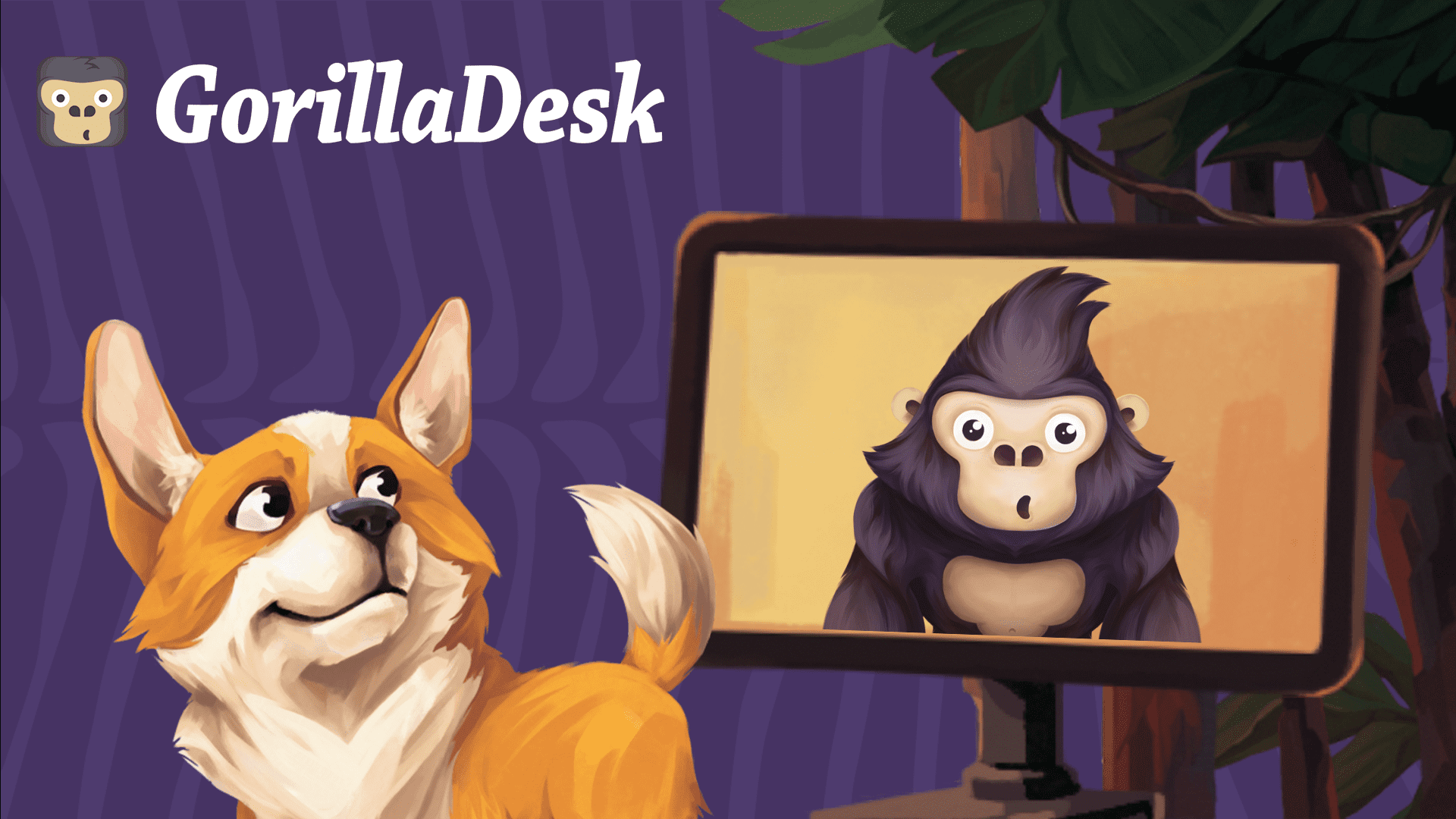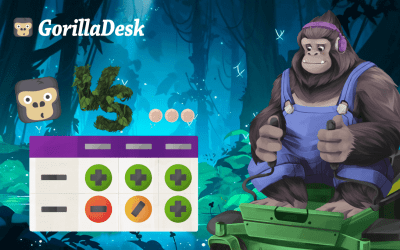Crack the code: Your next-level pest control website tips
Chris Moreschi

Create an online presence for a sharper edge on your competition
Like a well-designed storefront or business card, your pest control website is the first impression for online users. In fact, they form an opinion about your website in just .05 seconds, which gives you barely an instant to make a lasting impression and convince them to stay.
But before users get to your site, they have to be able to find it. Your pest control website must appear where your audience is searching and be user-friendly for prospects.
From pest control website design to SEO and content marketing, discover the must-have components to build your online presence, attract more prospects, and drive more revenue for your business.
First thing’s first: Create a comprehensive marketing plan for your pest control business
Before diving headfirst into pest control website design, step back and create your marketing plan. A clearly defined marketing plan is essential for identifying your target audience and understanding how your services can benefit them.
During this step, you’ll want to define the following:
- What are your business goals, and how will you define success?
- Who is your target audience? Where do they hang out online, and how will you reach them through your branding and messaging? (You’ll do more extensive planning and research on this part, later.)
- Who are your competitors? Do some competitive research and analyze competitors’ service offerings, websites, and marketing materials
- Establish your messaging and branding. What does your company stand for? Who do you help? What is your mission statement? How do you talk about your services and present yourself online?
- Determine your budget. How much do you have to spend, and how will you allocate your resources for business development, marketing, etc?
- Plan marketing activities and channels. What platforms will you use to promote your business?
Creating your marketing plan will help you define your strategy and determine which marketing initiatives make the most sense for your business, helping you focus on the marketing activities that will have the greatest impact.
And if you really want to double down on your marketing efforts (great idea, by the way!), here’’s our more comprehensive guide on pest control marketing tips.
Ready to make your phone ring?
Tell us about your business, and let us tell you how we can help.
What’s your edge? Make your pest control website stand out from the competition
Once you understand your target audience, you‘ll want to figure out how you can stand out from your local
competitors and attract and retain customers.
It starts with defining your unique selling proposition (USP) and creating a high-converting pest control website.
What’s your USP? (In other words: Why should customers choose you?)
What sets you apart from other pest control businesses? Do you offer the most innovative treatments? Do your technicians get rave reviews?
Defining your USP helps you differentiate your services and articulate exactly what makes you unique to your customers in order to demonstrate what your company does best.
Follow these steps to determine your USP:
- Understand your target customer’s pain points, needs, and preferences to help you tailor your USP to their specific challenges
- Research competitors to identify gaps in the local market and areas where you can differentiate yourself
- Identify your strengths. Whether it’s superior service, specialized expertise, innovative solutions, or exceptional customer support. Pinpointing these advantages will help you craft a compelling USP
Summarize your USP in a clear, concise statement that communicates the benefits of choosing your business over competitors. Focus on what sets you apart and how it benefits your customers.
Test your USP and see how your audience responds. Gather feedback and refine your message to ensure it resonates with your customers.
Turn traffic into customers: Create a high-converting pest control website As we mentioned above, your website is an opportunity to create a lasting, positive impact on prospects and customers. A high-converting pest control website attracts and engages prospects so they take the desired action, calling you or booking your services.
Several components go into creating a high-converting website.
- User-friendly design. Avoid the urge to make your website look flashy. Instead, ensure it’s easy to use and navigate and have clear calls to action (CTAs) to guide visitors through the conversion process so they can easily become paying customers. Optimize for mobile responsiveness so users can access your site from their phones or other devices. If you need help figuring out where to start, use a pest control website template.
- Professional look and feel. Your website’s your calling card. When users land on your site, they want to get the impression that you’re a legitimate, reputable business they can trust. Use clear visuals and showcase your services effectively. Use visual content strategically. A demo video can be helpful, but don’t bombard users with too many videos or graphics.
- Lead capture forms. Use lead capture forms to collect contact information from interested visitors
- Clear CTAs. Every page on your website should have a clear CTA that tells the user exactly what to do to proceed to getting more information or becoming a customer.
Once you’ve put these components in place, you can add additional content to educate and inform your audience. Use blog posts, articles, case studies, and customer testimonials or reviews to showcase your expertise, address customer pain points, and build trust with your audience (we’ll get to know more about these strategies below).
You can also establish social proof (the positive influence created when potential customers see others trusting and utilizing your services) and build trust by highlighting customer testimonials and reviews.
Get it out there: Marketing strategies to promote your pest control website
Now that you’ve wrapped your head around how your website falls into your larger marketing plan and the nuts and bolts of building it so it works for you, your next step is to get as many sets of eyeballs on it as you can.
After all, every business owner dreams of launching a website to bring leads and customers in automatically — and immediately. Unfortunately, that scenario is rarely the reality. (We all wish it were that easy!) So, you’ll want to take strategic action to market and promote your website to attract your target audience. A bit of work here can go a long way when it comes to getting your website out there.
Pest control website SEO
We’re repeating ourselves here, but we can’t stress enough: If your target audience can’t find you, they can’t book your services.
Search engine optimization (SEO) — aka the secret ingredient that makes your website more visible to people when they search online for pest-control related services. SEO best practices will help improve your website’s ranking in search engine results pages (SERPs).
SEO techniques like optimizing keywords, meta tags, and website content help your website appear higher in search engine results for relevant queries or searches. Optimizing your site using SEO best practices helps you rank for your target keywords (otherwise known as the terms people are searching in Google to find services like yours). The increased visibility will help potential customers discover you and your website.
By targeting relevant keywords and phrases, you can attract qualified traffic (website users who are likely to purchase your services at some point) to your website. These visitors are searching for information or solutions your business can provide, making them more likely to convert into customers. You can hire an agency with pest control SEO experience — or use tools to do keyword research to determine exactly what terms, phrases, or questions your target audience (potential customers) are searching for the most and the most frequently.
Use local SEO to target customers in your area
Optimizing your website is important for generating traffic, but local SEO is even more essential for reaching prospects searching for services in your area and increasing your customer list (conversions) and revenue.
When you optimize your site for local SEO, you begin competing for the first few positions in SERPs and Google Map results, which increases your visibility and your chances of attracting more qualified traffic from people in your area.
Here are the steps you can take to optimize your site in order to rank in local search results:
A) Create or claim your Google Business Profile
Update your profile with your business name, address, phone number, and website URL. Build social proof by asking customers to write reviews. Google offers insights to help you track performance metrics like views, clicks and calls. You can also refer to our blog post on choosing the right address for your Google Business Profile.
B) Optimize for local keywords
We already mentioned keyword research, but as part of your strategy, you’ll want to find the exact keywords local searchers are using. For example, you likely want to rank for queries like “pest control near me” or similar searches in your specific city or town. You can use keyword research tools and filter results by location or use insights from your Google Business Profile platform.
C) Create Google Local Search Ads
Google Local Search Ads are paid ads that can help you generate leads from your local service area.
These sponsored ads appear above the organic results in SERPs — you’ve seen them.
By targeting specific geographic locations and relevant keywords, Google Local Search Ads ensure your business stands out to potential customers in your area when they’re ready to make a decision.
With prominent placement and tailored messaging, these ads can help you attract highly qualified leads, driving foot traffic to your physical location or directing users to your website.
Google Local Search Ads offers advanced targeting options and measurement tools to optimize your ad campaigns. With features like location targeting, ad extensions, and call tracking, you can reach the right audience with the right message and drive tangible results for your business.
Creating Google Local Search Ads is free; you only pay when a customer contacts you directly from the ad.
Use Yelp/NextDoor
Local review sites like Yelp and Nextdoor can also help you expand your online presence, enhance your credibility, and connect you with local customers in your community.
Users can share their experiences and opinions to help potential customers seeking recommendations. You can create a business account on Yelp for free and update your listing.
Make sure to include:
- Your business name
- Physical address
- Website URL
- Phone number
You can showcase positive reviews, respond to customer feedback, and provide accurate information about your business and services.
You can use Nextdoor to engage with local residents and promote your business within specific geographic areas. By participating in conversations, sharing updates, and offering exclusive deals or promotions, you can establish your business as a trusted member of the community and attract new customers who value local businesses and recommendations.
Get more customer reviews
As you’re engaging with potential customers and your community on platforms like Yelp and NextDoor, you’ll want to begin asking your happy clientele to leave you some positive reviews. Customer reviews are valuable for businesses because they build trust and credibility, boost your reputation, improve your search rankings, and ultimately increase your sales.
Your prospects value other people’s opinions and experiences; 59% of consumers look at 2 to 3 review sites before they make a decision about a business, and 88% of potential customers trust reviews as much as personal recommendations from friends.
How to get more reviews:
- Make it as easy as possible for customers. Include a form on your website. Some Content Management Systems (CMS) (which are like a toolbox for your website that allows you to add new pages, images, and edit text and layout) platforms, like WordPress, have plugins and apps for creating forms
- Include review requests in post-purchase emails
- Add CTAs to your homepage to ask for customer reviews
- Offer incentives. Give out coupons or discounts in exchange for reviews
Build a content marketing program
Content marketing, the lifeblood of your website, connects you with your target audience.
By consistently providing relevant and insightful information, businesses can build trust and credibility.
Content marketing is a way for you to share helpful and informative content related to your pest control services on your website (and even on social media or YouTube) — and it’ll help you build brand awareness and establish your business as an authority. A pest control company, for example, can create authoritative content on how you deal with certain pests or how finding a reliable pest control company can help solve a user’s specific problem. The information isn’t only helpful, but it also makes them more aware of your brand and business.
It’s an opportunity for you to demonstrate your expertise, build authority, and ultimately drive growth and profitability.
Types of content marketing for your pest control website:
- Blog posts: Share tips and insights on common pest control issues, the pests that are most common in the regions you serve, FAQ content, and more
- Videos: Create engaging and informative videos, how-to guides and tutorials, and more
- Interactive content: Develop quizzes, polls, or calculators to engage your audience and collect valuable data.
Make social media marketing work for you
Businesses can use social networks like LinkedIn, Facebook, Twitter, Instagram and TikTok, to interact with customers, build brand awareness, and develop relationships with consumers. Social media channels have become your vehicle to share content, promote services, and gain valuable insights into consumer preferences and behaviors. One in three consumers use social media to discover new products and brands.
Share relevant content and updates on your social media channels, and take time to interact and engage with audience members. Respond to messages or comments on your posts.
Social media can also be a tool for consumer questions and customer service.
In 2023, HubSpot found that around one in five Gen Z, Millennial and Gen X social media users had contacted a brand through DMs to request customer service. It can be an easy way to communicate directly with — and actually reach — your customer base.
Don’t forget offline marketing strategies
Yes, the old-school ways still work! Now that you know the best ways to optimize your pest control website and market your brand online, to tap into effective offline marketing strategies to grow your business.
Digital platforms offer reach and accessibility — but sometimes nothing compares to good, old-fashioned interpersonal connection. Offline networking provides unique opportunities for face-to-face interactions, fostering deeper connections and creating memorable impressions.
Partner with a parallel business
You’ve heard it before, but it’s true: Sometimes, it’s all about who you know — especially in the business world. Aligning with other professionals can be a fruitful networking opportunity for you.
Pest control professionals can benefit from partnering with other businesses to build referrals, offer robust service packages, and expand their client base.
Some good businesses for pest control professionals to partner with include:
- Property management companies. They oversee rental properties, apartment complexes, and commercial buildings and often require pest control services to maintain tenant satisfaction and property value.
- Home service providers. Think: electricians, landscapers and more. They often encounter pest-related issues and can recommend pest-control services to their clients.
- Homeowners associations (HOAs) and community organizations. They often coordinate pest control services for shared spaces and common areas within residential communities.
Create customer loyalty programs
When you reward your customers for their loyalty, you keep them coming back.
Through a customer loyalty program, can you offer points or incentives to customers for their repeat business. Theyearn points when they use your services and then redeem those points for free services, cash back or other rewards.
Ultimately, loyalty programs help you reduce churn and retain customers.
Sponsor a local business
Increase your visibility and clout within the community by sponsoring a local business.
Sponsoring local businesses can increase your brand’s visibility within the community. Prospects will see your logo or brand name displayed at events, on their website, or in their marketing materials and they’ll start to associate your brand with reputable businesses which will build their trust.
In addition to all that added visibility, getting involved in the local community creates more opportunities to network with other professionals, potential customers and partners.
Referral marketing
By now, it’s probably pretty obvious that word of mouth goes a long way. Your existing customers are your best brand advocates, and you can use their loyalty to your advantage through referral marketing.
Referral marketing is a form of advertising where you encourage customers to recommend your services to others through incentives or rewards.
You can offer discounts, coupons, or other incentives for customers who refer your business to others. Like online reviews, referrals are valuable for your brand since people trust others’ opinions when looking for service providers.
But you don’t need to limit your referral marketing to your customers. You can also get creative and partner with other businesses to offer discounts or rewards in exchange for leads.
Optimize your pest control website and watch your business grow
Creating an optimized, user-friendly pest control website — and supplementing those efforts with online and offline marketing channels — are crucial steps in driving traffic to your website, increasing brand awareness, and generating new customers and more revenue.
Discover how GorillaDesk can help you grow your business and organize your operations. Contact us to learn more.
Other posts to check out
Make the move from paper to digital: A step-by-step guide for field service pros
If your field service business is still doing business on paper, it’s time to make a change. Here’s how to find success with a move to digital.
Pest control marketing: Let’s make that phone ring
With so many other local pest control companies making competition tight, keeping that phone ringing with new customers may not feel as easy as you thought. To keep your pest control business growing takes marketing know-how. Here are our best tips.
How to get more positive customer feedback
Customers trust online reviews just as much as word of mouth from friends and family. The truth is: Online reviews can make or break your local services business. Here’s how to build that glowing reputation your service deserves.
How to advertise your cleaning business in 2025
Learn proven strategies to advertise your cleaning business and attract clients. From local SEO to social media, this post has everything you need to succeed.
The 19 best window cleaning tools for your business
When your cleaning company uses the best window cleaning tools, your technicians and customers are happier. See how many do you use.
Window cleaning pricing guide: How to price cleaning jobs
Learn how to set competitive rates with our window cleaning pricing guide and strategies for bidding on and winning more window cleaning jobs.
Transform your business
Try it free for 14 days. No credit card required. Instant setup.
★★★★★
We will be customers for life
“I can not say enough good things about GorillaDesk it saves us so much time and money. The customer service is the best. I would recommend GorillaDesk to anyone no matter what industry. I trained my employee in 5 minutes on how to use it. We will be customers for life.”

Ryan Sullivan
Business Owner
Ready to Get Started?
Get all our amazing features and top-rated support, with no credit card required.






